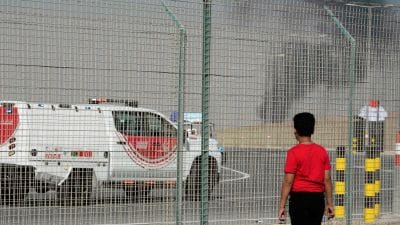Stay updated with the latest - Click here to follow us on Instagram
NIA returns to Kishtwar to quiz jailed Hizbul man
The magistrate allowed the NIA to quiz Azhar in jail for three hours during the next two days,said sources.
A weeK after having left Kishtwar along with two teenagers arrested in connection with the September 7 bomb blast outside the Delhi High Court,the National Investigation Agency (NIA) team on Wednesday returned to the town to question an overground worker of the Hizbul Mujahideen,who has been lodged in Kot Bhalwal jail since last year.
Identifying the detained man as Azhar Ali,son of Ghulam Mohammad Bhat of Paddar,sources said that NIA officials,led by an officer of the rank of Deputy Superintendent of Police,appeared before Additional District Magistrate R K Shiwan at Kishtwar and sought permission for a meeting with him in jail. Though senior police officers remained tight lipped about the matter,sources said this followed revelations by two Kishtwar teenagers Aamir Abbas and Abid Hussain who were arrested in connection with the blast and taken to Delhi for interrogation.
The magistrate allowed the NIA to quiz Azhar in jail for three hours during the next two days,said sources.
About Azhar,sources said he was arrested along with Irshad Ahmed Akhoon after the police busted a recruitment module of Hizbul Mujahideen in the district. At that time,Azhar was working with Skyline Communications as a field distributor for Airtel SIM cards,and Irshad was a teacher appointed under Rehbar-e-Taleem programme at a government primary school in Lidri.
Azhar,who was a close friend of Hizbul commander Amir Kamal alias Akram of Kishtwar,had been allegedly motivating youth to join HM. His arrest followed the apprehension of Junaid Akram Malik of Bhatindi in Jammu who had allegedly joined the outfit on Azhars persuasion.
RDX was used in Delhi blast: FSL
Ahmedabad: THE Directorate of Forensic Sciences in Gandhinagar has indicated that RDX was used in the September 7 Delhi High Court blast that killed 15 and left over 80 injured.
M S Dahiya,Deputy Director of the FSL,said,We had collected samples from Delhi for our own academic purpose. We had also done a study on the Varanasi and Mumbai blasts. We have not submitted any official report to the Delhi Police.
According to FSL sources,the scientific analysis of the material from the blast spot indicated that a highly powerful material was mixed with ammonium nitrate to create a high-intensity blast.
The FSL officials said that after the blast,the site where the bomb was placed had caved in,indicating that a powerful explosive was used. No nails and bolts were used in the bomb. In Delhi blast case,the injuries were due to explosive blast.







